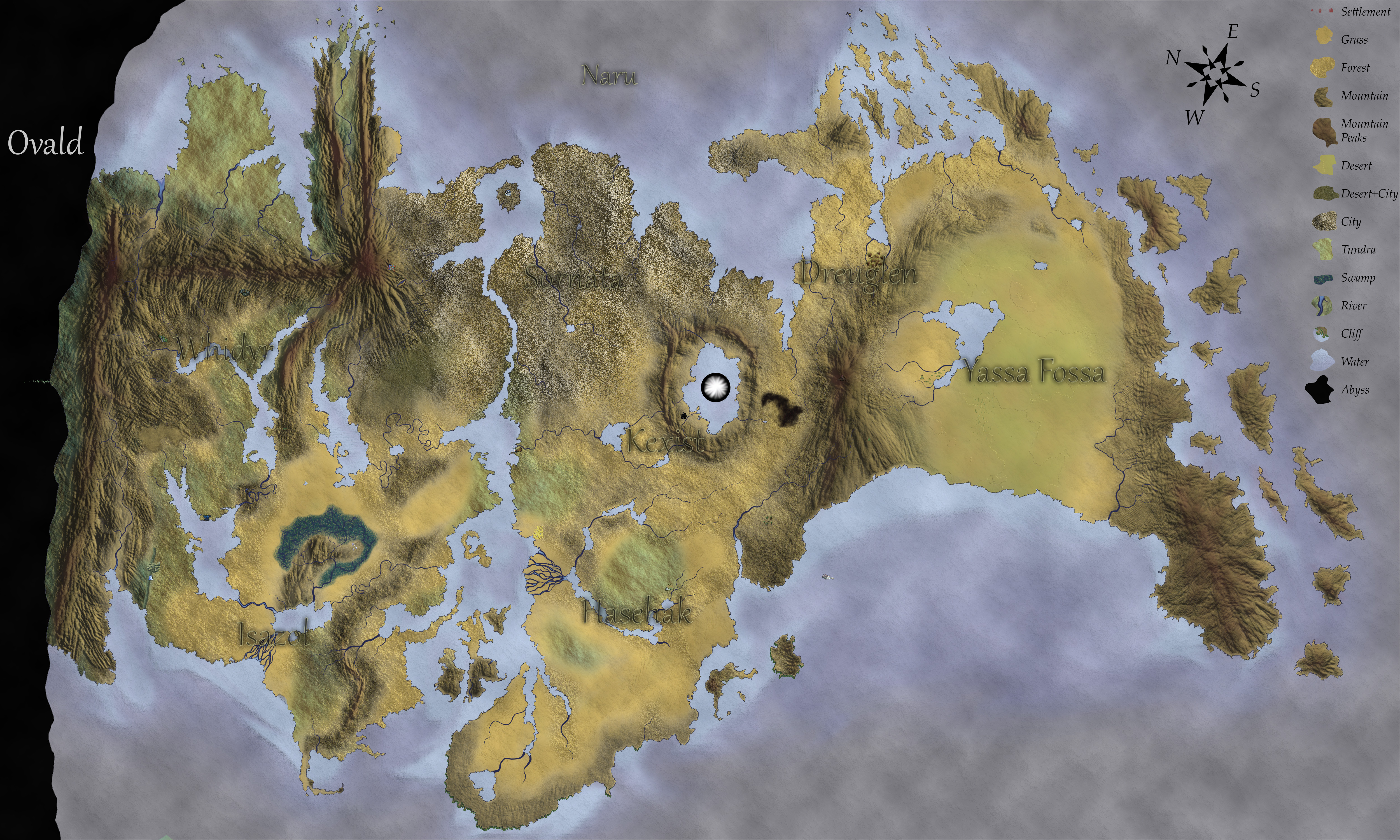Yug
Habitat
The yug tree can be found high in the mountains in southern Isazol; a taller subspecies grows in Blotaya. They find purchase in the rocky area just above the krummholz, approaching the peaks of the mountains. For the rocks yug trees bury their roots in, not many trees can find purchase and not many grasses can resist the harsh winds that roll. Spotting a yug tree is not hard from afar, their lives solitary and open.As the mountain climbs, so too does the temperature. This makes perfect since, since the higher the elevation, the closer to the sky’s sea of fire. This poses another problem for life, higher temperatures, dryer air, and the possibility of spontaneous combustion of a fiery wave comes crashing through the clouds. Like all life up there, the yug are more fire retardant, one of the worst timber to make a campfire from. All parts of the tree have a membrane that’s less permeable to fire, which reduces its size as it must spend more resources to being more dense. Furthermore, because of the access to much more sun, more energy from the fire, and untapped nutrients from the mountain, the tree somehow grows to a normal size for a pine, though it has a much thicker trunk.
Adaptations
Trunk
Similar to almost all trees in Kald, the yug’s bark is a dull silvery green. The bark is smooth with shallow horizontal grooves that allows for wind to pass by it. Only some species of moss, lichen, and fungus can find purchase on the tree. With this and how the bark is cool to the touch, some locals call it the Kae ÑaeKh or “metal tree”.Its trunk is quite thicker than most trees to stay sturdy in the barring force of the wind. However, it can still not totally win against the constant battering, so the tree often leans in the direction of the prevailing wind; if the tree is on the ocean-side of the mountain, it bends towards the mountain’s peak, if it’s on the land’s side it bends towards the valley (unless there’s a wind rotor or cavity, which the tree would face towards the peak).
Branches & Leaves
The branches grow in a spiral form. It would be very easy to climb up, if it weren’t for the fact the branches don’t start until half way up its trunk. The yug stretches its arms as far as it can, thick limbs with few branches that shroud the floor in sparkling shadow. The vast amount of energy from the closeness to the sayk combined with the lower pressure of high altitudes allows for gigantism in plants. Most can’t take this opportunity due to the closeness of fire. The yug does take advantage and grows wide.The area it’s branches covers depends on the age of the tree, older yug having branches so long they droop to the ground. Branches never have the chance to meet rock as many creatures find the leaves quite delicious. The pine leaves, like most other trees a faint yellow, are adorned year round, dropping and regrowing constantly, further smothering any hopeful seedlings that dare approach the yug’s core.
Roots
The roots of the yug tree grow more deep than they do broad. The root system typically grows about half the radius of the canopy while growing nearly twice as deep as the tree itself. The thick roots, easily tripped over if oblivious, keep the tree latched to the rocky inclines during heavy windstorms and, well, regular storms; the worst windstorms a young yug must weather before reaching maturity are during the dwindle season where the torrents can easily rip a spruce from its roots (if they grew at higher elevations). While the roots that dig into the rock allow for some steepness, the yug does not like to grow anywhere that’s over a 30 degree incline.
Lone Tree by Walter Moar
Growth
Seed dispersal
During growth season, the tree puts all its energy into growing large fruits in bundles of 3-5 at the end of the lowest branches. The weight of the fruits lowers the branches to either be at ground level or to be on the ground (while still being attached to the tree). Yug fruits are used in countless recipes if not eaten outright after freshly plucking. With a perfect amount of nutrients for many species and an ease of access, the tree seems to want the fruit to be eaten. It does and many creatures do. After enough fruits are picked/eaten, the branch is lifted out of most creatures' reach. The leaves of the Yug are also delicious (also used in many recipes), so the yug pulls them away from hungry herbivores. Those who consume the fruits carry around the seeds in their guts to be defecated at another location, the yug’s method of dispersal.The fruits that aren’t eaten fall off and roll down the mountain side. These potential offspring have less of a chance of germinating; they are unable to compete with the higher amount of vegetation lower down the mountain.
Nutrients & Symbiosis
Yug live in a nutrient rich environment, many stores of gypsum, nitrogen, and aether untapped and uneaten. However, since the ecosystem is more barren, the used nutrients have a hard time making it back into the cycle. So the yug have to create their own way to continue the cycle of passing nutrients, their own micro-ecosystem. Lichen grows on their trunk, moss covers their exposed roots, tiny insects live in the moss, small animals inhabit the branches. Some species can only be found in the Yug’s micro-ecosystem, namely the Musta, a fungus with relations to historic Fright Night.
Genetic Ancestor(s)




This is a really interesting tree species with many unique features as food, shelter and hinted at aether activity!